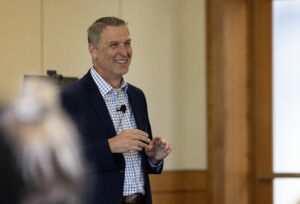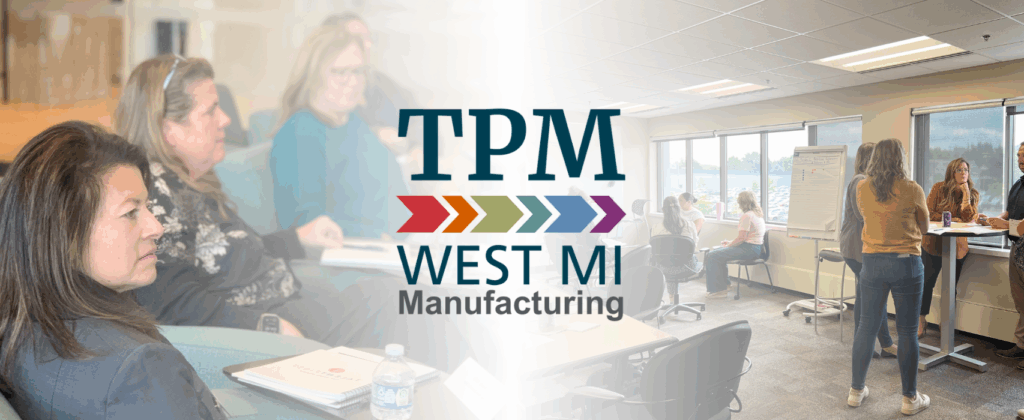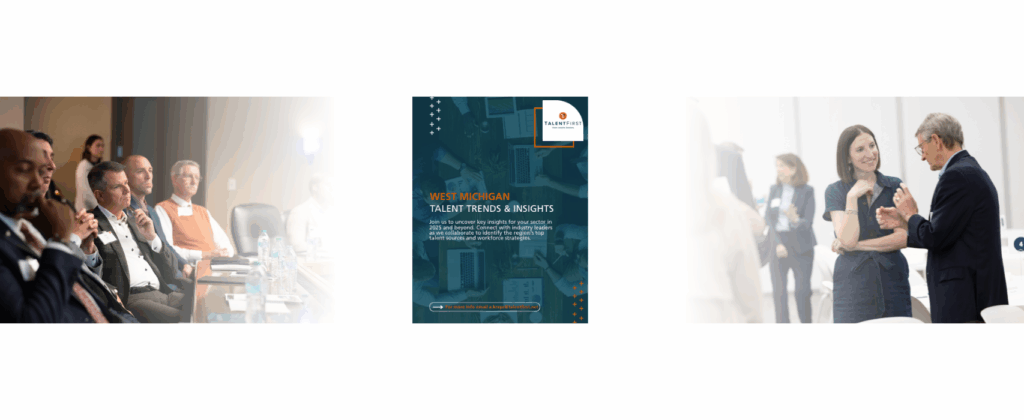Employers and their workers displayed a lot of resilience during the pandemic. But as weeks turned into months and years, the stress and anxiety took an emotional toll. Still, there was an expectation that, once the worst was over, things would improve.
That expectation was wrong, said Frank Giampietro, EY Americas chief wellbeing officer and keynote speaker at our recent Talent Solution Series event, Wellbeing @ Work.
“It turns out things didn’t get better,” Giampietro told the audience. “It turns out things actually continued to get worse in terms of the level of stress, the level of anxiety, and the level of depression.”
Those struggles are not exclusive to where and how we work. However, because we spend so much of our lives on the job, Giampietro said, employers have “an opportunity and an obligation” to nurture a work experience that is more human and fulfilling.
ROI of wellbeing
Paying attention to wellbeing benefits not just employees but also organizational performance.
Giampietro cited studies showing that high-performing organizations are 1.5 times more likely to emphasize physical and mental/emotional health, resulting in business returns that are 1.5 to 7 times greater in:
- Workforce health
- Employee engagement
- Talent attraction, acquisition and retention
- Greater productivity
- Lower absenteeism
- Bottom-line business results
- Innovation and creativity
- Customer satisfaction

“So, happier employers, healthier employees, happier clients and customers,” he said. “We’ve actually got a lot of great data that said this is both the right thing to do and actually the smart thing to do, to focus and invest around.”
EY’s own research finds several key areas important to wellbeing: health, connection, and an elevated sense of meaning and purpose. Factors that contribute to burnout or languishing — a sense of being stuck in neutral — include lack of fairness, poor relationships, mismatched values, workload, perceived lack of control, and lack of reward or recognition.
“We talk about these things in our work. We ask, ‘Do you have a high performer who’s no longer performing highly? Is that a performance problem or is there something else going on?’” Giampietro said. “If you’ve seen a change in mood, a change in behavior, a change in performance, maybe there’s something going on that’s much different from just as normal performance problem.”
Creating a culture
Wellness is a personal journey, and it’s important to understand the diverse, individual needs of a diverse workforce, Giampietro said. But it’s also important to foster a healthy environment for everyone.

“The way I like to think about it is we were treating the fish, but we all swim in a pond. The pond is what we call work. It’s the culture that we experience, day in day out, and we weren’t thinking about the pond. What if we treat the fish but they’re constantly swimming in dirty water? You’re not going to really get anywhere.”
For example, EY created a platform that gamifies improving healthy behaviors. By turning activities into playful challenges, employees found they developed healthy habits such as eating and sleeping better.
The firm also created an “EY Vitality Index,” a dashboard to track 24 measures of factors that influence employee wellbeing, such as working more than 50 hours a week, taking vacation time, feeling safe and included, financial wellbeing. The dashboard includes insights for leaders to boost vitality scores.
Four drivers of wellbeing
EY examined external research and analyzed results from internal initiatives to boil concepts down to four healthy ways of work, he said. These are:
1. Focus
“Only about 4% of people are capable of multitasking. The other 96% of us are doing something called context switching,” Giampietro said.
Context switching costs productivity. The interruption of a 30 seconds spent on a text message can cost an estimated 8-15 minutes of time is lost on a project. Being distracted also adds stress and fuels the perception of lack of control. It extends the workday and increases the likelihood of errors.
Cognitive overload has been shown to lower IQ by about 15 points — more than the 10 points associated with staying awake all night, he said.
“We’re both creating more stress and anxiety to deal with, and decreasing our brain’s ability to deal with it,” Giampietro said.
To create a more focused environment, he recommends being thoughtful about the flow of each workday, blocking off time so teams can do more deep thinking, and establishing norms about communication to limit interruptions.
2. Connection
Stress and anxiety increase production of the hormone cortisol, which by itself is not bad, but over extended periods can contribute to health problems, such as weight gain, high blood sugar and high blood pressure.
“The best thing to reduce cortisol levels is relationships,” Giampietro said, noting a recent U.S. Surgeon General report that said the health danger of loneliness was equivalent to smoking 15 cigarettes a day.
“That’s how a lot of people operate for a lot of their days, unfortunately. They’re feeling unsafe. They’re not feeling like they’re supported,” he said. “We can get teams working in a way together where they create that safety. … We can see people flourish and really thrive and be at their best.”
3. Predicable flexibility
The key to making flexibility effective at work is that it needs to be predictable by employer and employee alike, Giampietro said.
This might mean agreeing with a team member about a day of the week where they are not to be contacted after hours. Technology can help with this, he said, by setting focus times or delaying the send of an email when someone’s status is set to “do not disturb.”
4. Efficient impact
Everyone wants their work to matter, and they want to get it done as efficiently as possible, Giampietro said. Most of us recognize that a big project during a busy period might mean extra hours.
“What I don’t want to do is to have to come in on a Saturday because somebody wasted my time here. That’s super annoying,” he said.
That means it’s important to be deliberate about demands on time, including deciding if a meeting is actually necessary.
“We’ve asked teams to be much more intentional about what can they do in an asynchronous format. Consistently, teams have told us they get three to four hours back per person. Imagine if you gave everybody a gift of three or four hours a week.”
Our thanks to Frank Giampietro for leading this dynamic and interactive session of the Talent Solutions Series. Learn more about the series, which brings together leaders, experts and practitioners to work together on the biggest challenges facing employers today.


